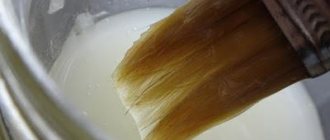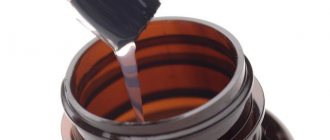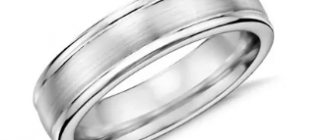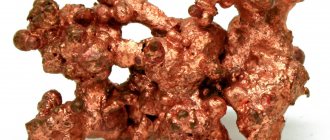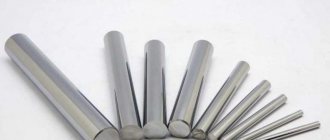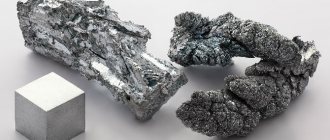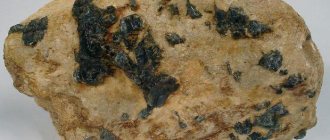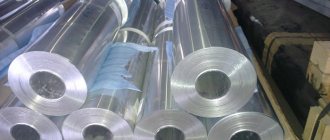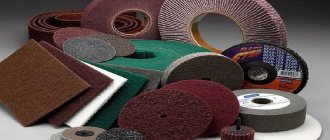Bone glue in most variations is an appropriate base based on organic components. They allow you to effectively connect elements made of wood, cardboard, hardboard and other similar materials. The connection itself is characterized by maximum strength; even if the structure is destroyed, you can notice that it is not the adhesive layer that is deformed, but the adjacent layers of wood or analogues. The mixture in question includes safe organic components that are approved for use in educational institutions and children's rooms.
Types of bone glue
To prepare the base composition, several main types are used, differing in the main components:
- Flesh option.
- Fish composition.
- Pure bone glue.
The latest version is the most common, the composition is obtained from animal bone waste. The most valuable specimens are considered to be pellets obtained from horns. The set includes collagen, gelatin and cysteine, which have excellent viscosity and are capable of firmly gluing products made of wood and similar materials.
The leather analogue is made from waste from the leather industry. In fact, the main part of the material consists of subcutaneous tissue, cut off during the tanning of hides. Oligopeptides and natural leather trimmings are often added to the composition of this glue. Output – scales, tiles, powder.
Fish bone glue is prepared from bones, heads, scales, entrails, and fins. This substance is the most expensive, but it was often used for icon painting and other works that required maximum care and accuracy. A composition is produced for fastening dissimilar parts, produced in the form of granules or flakes. Let's consider the features of all variations, as well as the features of their operation.
Preparation
Carpenter's bone glue is mainly sold in dry form. The mass is small brown or yellow granules, sometimes this material is presented in the form of small slabs. Can the quality of the composition be determined visually? The purer and lighter the material, the better the product. The cooking process is also extremely important. For example, a tile needs to be crushed into crumbs, and then used for its intended purpose. The preparation of bone glue is divided into the following stages:
- Soak. Powder or granules are poured with cold, pre-boiled water. Tap liquid can negatively affect the quality of the finished mass. Fill the container so that all elements of the adhesive composition are covered. Soaking is considered correct if the substance becomes soft and gelatinous. The soaking process takes from 4 to 12 hours, depending on the amount of product being processed.
- Cooking. The swollen glue should be boiled for about 15 minutes in a steam bath. Maintain the temperature at about 60-80 degrees. The result should be a homogeneous liquid mixture without lumps. It is important not to heat the mass over an open fire and not to bring it to a boil. Otherwise, the protein from which the granules are made will begin to deform, and the adhesive ability will decrease. After a thin film has formed on the surface, the adhesive mixture is ready.
Casein glue
Casein glue is made from casein, a protein substance that is released when milk is acidified in the form of a curdled mass, which is then dried and ground. Casein is insoluble in pure water, but dissolves even in weak alkali solutions, yielding caseinate solutions with strong adhesive properties. Potassium or sodium caseinates are soluble in water, while calcium caseinates are insoluble. Therefore, 15-20% lime is added to casein paints for facades (calculated as CaO).
Ready-made dry mixtures consisting of crushed casein, pigments, alkali, lime and antiseptic (phenol) are called casein paints. They come in a variety of colors (white, pink, green, etc.) and give durable matte films on lime plasters (especially fresh ones containing Ca(OH)2), as well as on dried stone surfaces.
To obtain a solution of the desired consistency, dry paint is mixed with hot water. To increase water resistance, a little drying oil is sometimes added to the paint (when it becomes pasty). This composition is already transitional from water-adhesive to water-emulsion.
Casein-rosin water-emulsion compositions consisting of an aqueous solution of casein with ammonia, a solution of rosin in turpentine, pigments and chalk (filler) are distinguished by increased water resistance and good adhesion to substrates. The same compositions (without pigments, but with an increased amount of chalk) are often used for putty layers.
For painting plasters in interior dry rooms that are not subject to sudden temperature fluctuations, as well as for painting interior wooden surfaces in temporary buildings, adhesive ones are most often used; compositions (primer or putty) that give a smoother surface than lime compositions.
Peculiarities
The readiness of bone glue for wood can be checked in another way. The stick used to stir the substance is raised above the composition. If the product drips down in drops, the process is not completed; complete readiness is indicated by the flow of the mass in a monotonous stream.
To cook natural glue, a special device is used - a glue gun. It consists of two vessels of different sizes, one of which is inserted into the other. A large container is filled with water, and the second reservoir contains the resulting glue. At the next stage, a small vessel is placed in a large tank and placed on fire. The optimal manufacturing material for the glue is copper.
Recommendations
You can prepare glutinous glue yourself. To do this, you will need to take two containers of different sizes. The outer shell could well be a tin can. Insert a tin can attached to a wire inside it.
The quality of the adhesive composition can be improved by adding various fixing substances. This will allow you to use glue for fastening not only wooden surfaces, but also other analogues.
Among the components used, the most popular, along with efficiency, are the following materials:
- Drying oil. About 10 grams of linseed oil or 40 granules of natural drying oil are added to the composition. This component allows you to increase the resistance of the working seam to moisture.
- Glycerol. An equally effective component makes it possible to use glue when processing leather surfaces. Added at the rate of two teaspoons per liter of finished substance.
- Chalk powder combined with wood ash. After sifting this mixture, add it in small quantities. The paste improves putty properties,
- Phenol, ammonia, borax. These components are an excellent antiseptic that prevents the formation of fungus and mold.
I can do it myself, I can do it myself
Paste. a) From potato flour: thoroughly mix a teaspoon (with the top) in a small amount of cold water. Pour boiling water in a thin stream, stirring all the time. You can also pour diluted starch into boiling water; this must be done quickly, without stopping, stirring all the time. Heat the brewed glue again to a boil and immediately remove from the heat. The glue should be free of lumps.
b) Made from wheat flour. Whisk the flour in lukewarm water and cook until tender.
c) Corn flour is brewed like potato flour. Use twice as much flour for brewing. Potato paste brews quickly, but is not strong and after a day it liquefies and then stops sticking. Wheat paste is more sticky and retains its properties for 8-10 days. For gluing leather to wood, a paste made from rye flour is usually used. The same paste is used to glue canvas, oilcloth, cloth and other fabrics to wood.
Fish glue. The best glue is obtained from the swim bladders of sturgeon fish. They are boiled until they are softened and float, then cooled in cold water and dried. The head, tail, cartilage and bones of sturgeon fish also make very good glue. It is boiled until the liquid solidifies in a spoon when tasting. The bones, scales, heads and tails of other fish make glue of the worst quality. Fish glue is not afraid of dampness.
Antler glue. The simplest way is to crush the horns and boil them with water, evaporating until a thick jelly remains. Water has to be added three or four times. A more advanced method: the horns are crushed with an ax into pieces of 8 - 12 cm and soaked in water for 2 - 5 days. Wash and add water and cook in a boiler for 6 - 10 hours. The liquid part is poured into a second boiler and evaporated for 1 - 1 1/2 hours until it reaches a jelly-like consistency. This mass is used for drying. Water is added to the first boiler and additionally boiled. The second portion of the broth is treated as with the first. Dry the glue at a temperature of 20°C for 5 to 6 days. Yield - 10 - 20% of the weight of the horns. The glue is of high quality - better than sturgeon.
Wood glue. Preparation. Horns, thin bones, skin, hooves or hair are boiled in water until syrup thick and poured into wooden molds. Allow to cool in a cool place, and the resulting gelatinous mass is cut into slices and dried in the sun. To prepare the glue, the leather must first be soaked in lime water and when it softens, rinse it in clean water. To check the quality of the glue, it is immersed in cold water for 12 hours; good glue only swells, and bad glue dissolves. In order to prepare carpentry glue that is not afraid of dampness, it is boiled with mowing or drying oil
Usage. Break the glue slab into pieces, pour cold water so that the glue is covered, and leave for several hours: then drain the water. To heat the glue, it is best to place the tin in another, larger diameter, filled with water (water bath). Boil until completely melted. You can use two tin cans as a glue. Attach a wooden handle or bow to the outer one, and bend the cut lid on both sides of the inner one so that it rests on the outer can. The glue is used only hot. He glues wood, cardboard, paper. To enhance the binding force of wood glue when gluing wood, the surfaces are rubbed with fresh garlic.
Syndeticon type adhesive that does not harden when cooled. Add acetic acid (or vinegar essence) to the wood glue while it is still hot and stir immediately. The quantity is determined by density. If the glue is too thick after cooling, add more acid and stir. The glue is not afraid of dampness.
Linseed oil glue. Wood glue, swollen in water, is boiled in linseed oil or drying oil. This glue hardens more slowly than usual, but is not afraid of dampness. You can add 30 g of pine resin to 1 liter of drying oil.
Rubber glue. The rubber in conventional rubber products is vulcanized and is not suitable for making adhesives. From it you can, by heating, prepare melted rubber for ski waxes. To make rubber glue, you need non-vulcanized rubber, which dissolves in gasoline, benzene, ether or turpentine. The rubber is cut into small pieces, filled with solvent and placed in a warm place until completely dissolved. Mainly used for gluing rubber. The areas to be glued are cleaned with sandpaper, a razor or a rasp and lubricated with glue. When it dries, the parts to be glued fold and compress.
Glue for leather products. Wheat starch - 65 g, water - 200 g, vodka - 135 g and chalk - 100 g. Starch is dissolved in water, vodka is added and mixed with chalk. Then another composition is prepared: dry wood glue - 35 g, turpentine - 35 g and water - 35 g. Both compositions are poured together and heated until a homogeneous viscous mass is obtained. The glue is used cold. Suitable mainly for small leather goods.
Adhesive for plastics. For black plastics (cameras, etc.), you can prepare glue. From a gramophone record: you need to crush a piece of the record and fill it with two volumes of alcohol or denatured alcohol. Keep for 5 - 7 days, shaking frequently. Filter through chamois leather soaked in alcohol. All these glues dry very quickly.
________________________________________________
“Handbook of Traveler and Local Historian” - S. V. Obruchev
Storage
Natural protein-based adhesives have their own characteristics. Users who use such formulations for the first time should take into account some features.
Among them:
- Adding boiled water. This is necessary if you want to make the mass thinner or extend the cooking time of the composition.
- The optimal operating temperature varies from 30 to 70 degrees Celsius. After this, the finished adhesive mass retains its properties for two hours (provided the ambient temperature is 20-25 degrees). Then the composition begins to cool, and its properties are lost.
- Ready-made wood glue cannot be stored for long periods of time. Within a day it loses its properties. In this regard, to use it, it is necessary to use as many granules as required for a specific operation. On the third day, the composition begins to decompose and smell unpleasant, which is due to its protein base. The glue is applied in layers no thicker than 0.2 millimeters. A thicker layer simply will not set properly.
Exploitation
Casein glue can serve as an analogue for gluing wooden furniture. It consists of sodium fluoride, kerosene, copper sulfate and slaked lime. This composition is not used very often because it has a short shelf life and is prone to drying out, changing color and decreasing in volume.
Working with wood glue is somewhat different from using synthetic analogues (for example, PVA (polyvinyl chloride analogue), which is also used for gluing cardboard and wood).
What can be glued with wood glue
Wood glue (hide and bone) is universal and is suitable not only for gluing wood.
- If you add 1/50 of glycerin to the volume of glue, then you can glue the skin with this composition.
- By adding glycerin 1:20, the heat-resistant properties of the glue are enhanced.
- The water resistance of wood glue increases by adding 10% by weight of potassium dichromate or 15% turpentine.
Subscribe to our Yandex.Zen channel
Preparation
The operating algorithm can be derived as follows:
- The glue is prepared according to the above method, with precise control of the cooking temperature.
- All bonding surfaces must be dry and clean. The maximum moisture content for wood is no more than 10 percent (veneer - half that).
- The adhesive mass is applied with a bast or bristle brush to both surfaces, the thickness of the seam is 0.1-0.2 mm.
- You need to wait three minutes. This will allow the adhesives to grip securely and not be squeezed out when connecting the parts.
- After fixing the elements, you will need to grind them together.
- It is advisable to tie the parts to be processed with twine or compress them with a clamp.
- Full use of the product is allowed no earlier than after six hours of exposure.
conclusions
All of these types of wood glue are environmentally safe. It is better to carry out construction operations with the hide version or PVA. These substances have excellent setting parameters and are affordable. For restoration and gluing of delicate and thin surfaces, glue made from fish raw materials is suitable.
Basic criteria for choosing wood glue:
- The lighter and more transparent the granules or tiles, the better the quality of the raw materials used.
- The most expensive and best glue is made from fish waste. It meets the highest standards. Used for restoration work and joining delicate surfaces.
- Bone and flesh composition is used for routine repair work.
PVA carpentry glue - characteristics
PVA-based wood glue is sold ready-made; there is no need to dilute it in water. Ideal for working with hardwood, including tropical wood. The resulting seam is not afraid of moisture, it is durable and transparent.
Waterproof wood glue is used everywhere; the rapid development of technology and the emergence of new offers on the market do not prevent it from being in demand.
Among analogues, we can offer Moment carpentry glue, it is suitable for wood and plastic, sets quickly, and is very durable.
